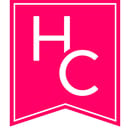When people think about Vancouver, it is often a picturesque image that emerges; one of peace, beautiful scenery, and an obsessive love for recycling. Although these images may be true, they represent only the idealistic surface of city. If you were to dig deeper, you would find a history riddled with groups of people protesting labour issues, gender/racial/sexual orientation discrimination, class wars, fights for social/environmental justice, and, sometimes violent, rioting. This is the history that co-curators Kate Bird, former Pacific Newspaper Group librarian, and Viviane Gosselin, Director of Collections & Exhibits at Museum of Vancouver (MOV), had in mind when creating City on Edge: A Century of Vancouver Activism. Designed by Amir Ofek with the assistance of Bird and Gosselin, City on Edge features 650 photographs as proof of Vancouver’s rebellion.
Photo displays images from the exhibit
Entering the exhibit, I was instantly taken aback by the blown up photographs taken from the Vancouver Sun and The Province archives. As I observed the photographs, sounds of protestors cheers, speeches, screams, and chants filled the space around me. Bird explains that what we are seeing is especially spectacular because some of these images have never been available to the public prior to this exhibit. Indeed, we are receiving a rare glimpse of the past. In the first room, six projectors displayed images against the walls, blown up to become truly larger than life. Each of the six sections represented a different set of issues, from LGBTQ rights to violent riots. To maximize the space, each projection changed every minute, shifting to a new photograph like a slideshow. With the chanting sounds overhead and the constant changes in scenery, I felt as though I had been transported to the chaos and total senses experience of a real street demonstration. As Bird said, “you can feel like you are part of the protest.”
In the next room, a large structure was placed to represent a staircase covered in graffiti. Above it, a truly amazing image of overlapping photos reveals the massive amount of demonstrations that have taken place on the steps of the Vancouver Art Gallery, formerly the Court House. Visitors are welcomed to sit on the steps to enjoy the rest of the room. If guests want to become more involved, however, chalk will be provided for them to draw on the stairs, adding to the graffiti while releasing their own pent up emotions.
The structure placed in the exhibit for guests to sit on and/or fill with chalk drawings
Beyond the staircase, this room features glass classes that showcase artifacts gathered from previous protests. One in particular, where a plush toy resembling a bedbug, catches my eye. We are told that this bedbug was used by supporters of the anti-Olympic movement in 2010 to raise awareness to problems facing vulnerable citizens, particularly the homeless. Their demand: why was the government spending valuable money on the Olympic games instead of affordable housing and health care?
A plush bedbug used to protest the Winter Olympics in 2010
Another thing about the exhibit that stood out to me was the juxtaposition of the old and the new. For instance, one of the images displays a powerful scene of 100s of men occupying the post office (now Sinclair Centre) to draw attention to their struggles of joblessness following government cuts to relief programs in 1938 during the Great Depression. If you turn to look at another projection, you may see people marching during a Black Lives Matter demonstration in 2016. It is truly incredible seeing the wide scope of issues, and how they transcend time.
A collection of protest buttons donated to the exhibit
If you have an interest in history, this is an exhibit not to be missed. Even if you don’t, it is impossible to not leave the exhibit feeling completely inspired and awestruck by the years of struggle, and the continuing struggles today. If anything, it made me feel more connected to my city, as my own passions were ignited and I silently thanked those who came before me to fight for a better future.
Get in touch with your inner rebel and explore City on Edge. The Exhibit will be running from September 28, 2017 to February 18, 2018 at the Museum of Vancouver.
All photographs of images and artifacts were taken by Samantha Schumacher. The real photographs are archives from the Vacouver Sun and The Province.

